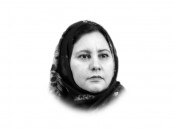Practice, pedagogy and quality in art education
Educators can provide students with a comprehensive and engaging art education that fosters creativity

To whom it may concern-II
The Imperial British sought to prove superiority over their colonised Indian subjects by ridiculing or ignoring the country's rich artistic legacy. The Indus Valley civilisation (5000-2500 BC) showcased sophisticated urban planning, but the colonisers refused to acknowledge its advancements. Similarly, the intricate Buddhist iconography (1st Century AD), born out of rigorous experimentation and supported by religious inquiry, was disregarded. Illustrated Jain manuscripts (11th-century Pala painting) and the stone carvings that adorned Hindu temples were deemed grotesque.
Mughal art was dismissed for lacking mathematical precision and was relegated to mere craft. Other art forms, such as jewelry, metalwork and embroidery, which were the highlight of Muslim material culture in Medieval India, suffered a similar fate. After the independence, this mindset persisted as we blindly chased Western modern aesthetics, still managing to achieve many milestones and made lasting impacts. However, the rapidly changing times have altered the scope of art, necessitating modifications to our education system to accommodate these shifts.
Decolonising art education is crucial. It seeks to redress historical biases, promoting inclusivity and representation of marginalised voices and art forms. It shall also dismantle the hierarchy between fine arts and crafts and the divide between representational and conceptual art. The production of art and cultural industries has always been shaped by factors like religion, politics, economy and the natural world, as well as lived experiences and emerging challenges. An effective art and design education must weave these socio-political and economic threads together. In the contemporary context, creativity defies linear equations, blurring boundaries between creator and consumer, demand and supply, and action and reaction. Moving forward, we can redefine art by relocating our compass, revisiting history and reevaluating the past. This involves retaining timeless legacies, resolving epistemological differences, reconnecting communities, and acknowledging transculturation as a reality that involves the reciprocal exchange of cultural practices, ideas and values, leading to the creation of new cultural identities and expressions. Ultimately, we must review existing models and paradigms and rethink our understanding of the 'indigenous'.
To achieve these milestones, we must reformulate Art and Design pedagogies, empowering students to create relevant art that unlocks its full potential. This raises important questions about 'quality' in art. Given the subjective nature of 'good', 'bad' and 'quality' art and its inherently experiential nature, what can be assured in art practice and teaching is its capacity to: 1) create awareness, and 2) foster harmony across diverse societal segments. Assessing quality in art education is complex due to the subjective and experiential nature of art, making it challenging to quantify artistic expression. Thus, evaluation must consider both artistic outcomes and the creative process, while navigating potential biases, external pressures and the need for comprehensive assessment practices.
Defining quality in art education involves focusing on positive learning outcomes, holistic education and multiple purposes. To achieve this, educators can use authentic assessment methods that mirror real-world settings, encourage creative problem-solving and integrate skills and knowledge from multiple content areas. This approach utilises a circular loop of performance, feedback and revision, allowing students' work to develop and evolve. Effective art education also incorporates various teaching approaches, such as choice-based, inquiry-based, play-based, project-based and design thinking, as well as STEAM and social justice learning. Additionally, ensuring quality art education requires qualified teachers, adequate facilities and materials, integration of digital technologies, regular reflection and feedback, ongoing curriculum development and professional development. By adopting these strategies, educators can provide students with a comprehensive and engaging art education that fosters creativity, critical thinking and artistic growth.
Sincerely yours,
Bano
September, 2025















COMMENTS
Comments are moderated and generally will be posted if they are on-topic and not abusive.
For more information, please see our Comments FAQ